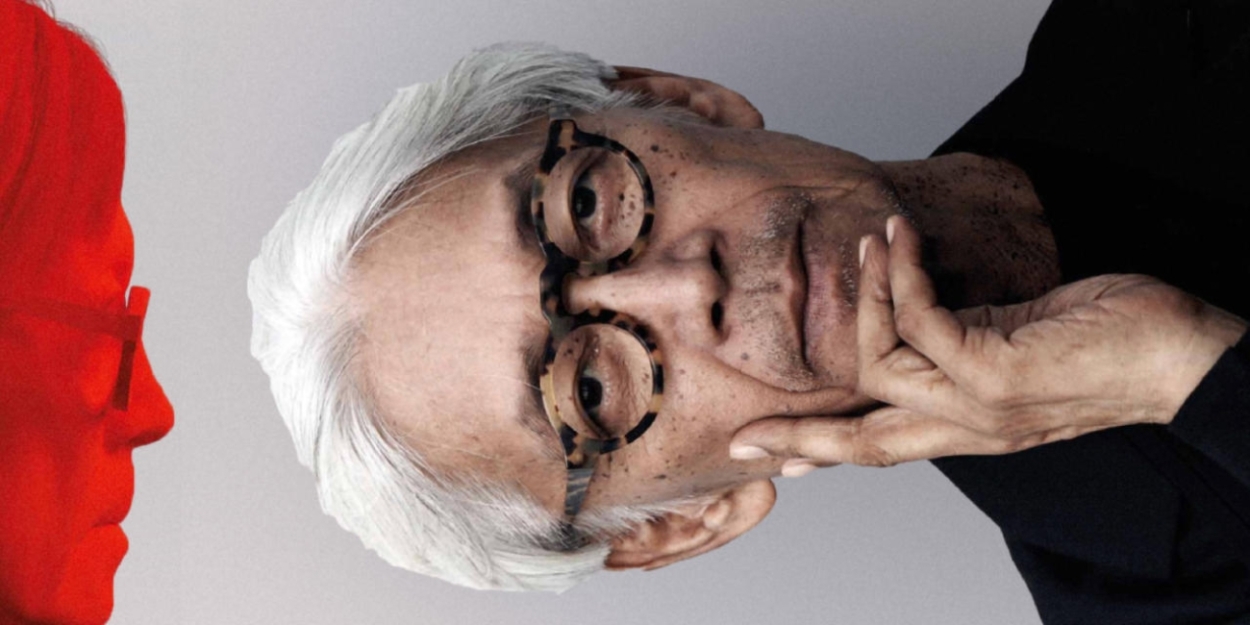Review: KAGAMI, The Roundhouse
A "mixed reality" show brings the famed composer Ryuichi Sakamoto back to some semblance of life.

![]() Thanks to some nifty “mixed reality” technology from Tin Drum, the late Japanese composer Ryuichi Sakamoto is brought back to some semblance of life in Kagami.
Thanks to some nifty “mixed reality” technology from Tin Drum, the late Japanese composer Ryuichi Sakamoto is brought back to some semblance of life in Kagami.
The raw material for this show was created during the pandemic: over three days in December 2020, Tin Drum filmed the seminal Japanese musician in Tokyo using 48 cameras, capturing him as he played at his piano. He died just over two years later aged 71 and this collaboration is a powerful testament to his intense and mesmeric style.
Kagami (“Mirror”) played in New York and Manchester last year and the London setup is similar. The experience is prefaced with a short film about Sakamoto and his famously experimental approach to aural exploration; one scene sees him stand in a rainy garden as he puts a blue plastic bucket over his head to hear the raindrops while another shows him lowering a microphone into Arctic waters (“we are fishing for sound!” he tells the camera).
Once inside, the audience are asked to sit on the periphery of the large space as technicians come round and give out the special goggles with instructions. Its battery is on a lanyard which goes around the neck and there are no headphones as all music comes through in crystal clarity from the Roundhouse’s own audio systems.
The tech itself is a marvel - when it works. It is a definite step up from what Tin Drum created for Marina Abramović: The Life at the Serpentine Galleries in 2019 which was a rather more static affair compared to what we see here. Through a blend of augmented and virtual reality, we can see Sakamoto sitting at a grand piano in reasonable fidelity, his feet tapping and head nodding along with the music, his fine white hair shifting slightly as he does. When we get up close, we can see his fingers move over the keys and the hammers come down inside the piano itself.
Around him, we are treated to an array of showy effects: clouds of smoke roll in at his feet, raindrops are suspended in midair inches from our nose and cityscapes rotate at speed around us. During the most recognisable number (“Merry Christmas, Mister Lawrence” from the film in which he also starred opposite David Bowie), we see ourselves in an enveloping cosmos, floating above the planet Earth.
The combination of AR and VR has its ups and downs. The kit we wear is lighter than other sets used for VR shows of this length like Blanco Li Dance Company’s Bal Du Paris and ZU-UK’s Within Touching Distance. Presumably so that we can focus on Sakamoto and the whizzy imagery, the goggles render other audience members almost invisible. This is something of a mixed blessing; while it gives the experience a far more immersive feel and imparts a strong sense of one-to-one connection, this sometimes leads to bumping into other people as we wander around or having them walk into you. This is all handled with typical British politeness but wrenches you mentally out of Kagami, if only for the time it takes for you both to apologise.
That the physical tech isn’t perfect yet is clear. The headset feels a little too heavy and rubs up against ears and nose, and it has the occasional crash which requires a quick reset by a member of staff. The visual quality of the composer and his piano is more DVD than Bluray; a flurry of what might be leaves look like red and gold pringles and there’s something of a ghostly sheen over the composer throughout. On this point, Tin Drum have been up front with director Todd Eckert going as far as saying that “the point was never the technology” but instead Kagami is about “trying to find a way to connect an artist with an audience he would never meet”.
That’s a fine sentiment but Sakamoto, despite and because of his many contributions to music and especially electronica, is something of a poor subject for this kind of focussed concert treatment. Unlike his more stirring synth works, his plinky-plinky piano style is often plaintive and haunting but never truly heart-grabbing. Even over the relatively brief one-hour running time of Kagami, his modest persona is too restrained to hold the attention (Jerry Lee Lewis he is not). He himself speaks only twice: once to register surprise at why “Energy Flow” - a track used for a TV ad - topped the Japanese charts in 1999 and the second time to introduce “BB” which was written minutes after hearing of the death of director and collaborator Bernardo Bertolucci. Most disappointing, Sakamoto's passionate sonic experimentalism seen in the prologue is entirely absent thereafter in what effectively boils down to a piano recital with added eye candy.
So where do we go from here? ABBA’s hologram show Voyage is a roaring success and Elvis Evolution (an AI-powered immersive depiction of The King from Layered Reality) is debuting in London this November ahead of a world tour. A VR Beethoven banging out “Eine Kleine Nachtmusik” would need to use AI to recreate the maestro but isn’t beyond the realm of current technology. With mo-cap now a standard in Hollywood and concert films like Taylor Swift’s The Eras Tour doing a roaring trade, the logical next step may be to have immersive digital experiences capturing today's acting or musical stars in their prime for all posterity. Like the 3D movies of yore, these could be enjoyed in cinemas or even at home; I mean, who wouldn’t want to watch Andrew Scott’s Hamlet while checking emails?
Kagami continues at The Roundhouse until 21 January.
Photo credit: Tin Drum
Reader Reviews

Videos

